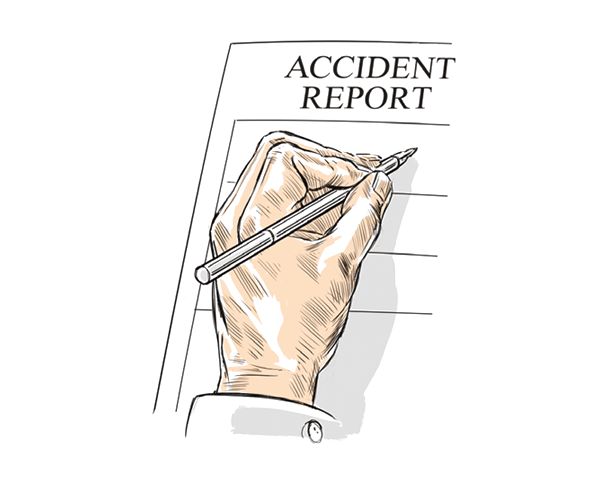Out of control
Alauda Airspeeder Mk II
UAS, registration n/a
Goodwood Aerodrome, West Sussex
Injuries: None
While performing a demonstration flight, the remote pilot lost control of the 95kg Alauda Airspeeder Mk II scale demonstrator. After the loss of control had been confirmed by the remote pilot, the safety ‘kill switch’ was operated but had no effect. The unmanned aircraft then climbed to approximately 8,000ft, entering controlled airspace at a holding point for flights arriving at Gatwick Airport, before its battery depleted and it fell to the ground. It crashed in a field of crops approximately 40 metres from occupied houses and 700 metres outside of its designated operating area. There were no injuries. The AAIB found that the Alauda Airspeeder Mk II was not designed, built nor tested to any recognisable standards, and its design and build quality were of a poor standard. The operator’s Operating Safety Case contained several statements which were shown to be untrue. The Civil Aviation Authority’s Unmanned Aircraft Systems (UAS) Unit had assessed the operator’s application and, after clarification and amendment of some aspects, issued an exemption to the Air Navigation Order to allow flights in accordance with the operator’s Operating Safety Case. The CAA did not meet the operator nor inspect the Alauda Airspeeder Mk II before the accident flight. There have been many other similar events where control of an unmanned aircraft has been lost, resulting in either it falling to the ground or flying away. Even a small unmanned aircraft falling from a few metres could cause a fatal injury if it struck a person.
“The unmanned aircraft then climbed to approx 8,000ft, entering controlled airspace”
Comment The findings of this enquiry were mostly regulatory, but they are a reminder that these devices are sharing airspace with us. Clearly the enquiry raises questions both for the regulator and the operators and it is imperative lessons are learned for the safety of us all. While the Board comments on the threat to life on the ground, meeting such a beast in the air would be terminal for most of us.
Steps too far…
Birmingham Airport, UK
Injuries: None
After completing some routine maintenance on the approach lights to Runway 33 at Birmingham Airport, two airport engineering services technicians drove along the runway in an airport works pick-up truck en route to their next task. In the back of the pick-up truck was a step ladder that they had been using. As they drove through the touchdown zone, the ladder came out of the vehicle and came to rest just to the right of the runway centreline. Three aircraft subsequently landed on Runway 33.
The investigation concluded that the ladder fell from the truck during the drive along the runway, at the point where it accelerated in the touchdown zone after the end of the supplementary lights. The means of securing the ladder in the rear of the open back vehicle using a bungee was not suitable. The bungee was available for use within the maintenance organisation’s facility, but its provenance was not known. More suitable securing equipment was available although not readily to hand.
Comment Fortunately no aircraft came into contact with the pair of steps – but the consequences of doing so would have been serious for any size of aircraft. And yet this type of incident could happen on any of our airfields, particularly given the recent lack of aircraft movements.
Now might also be a good time to remind the local farm vehicle drivers that your airstrip is still shared by aircraft and perhaps carry out a pre-return-to-flying ‘FOD plod’.
Tree trimming…
Piper PA 28-151
G-CKIO
Woodside Farm, Hockerton, Notts
Injuries: None
The aircraft was on a training flight from Nottingham Airport with an instructor and a student. The student, who held a lapsed PPL, was at the controls and was practicing a forced landing over farmland. The instructor stated that he had not realised how close the aircraft had become to trees during the procedure and that the student delayed applying power to climb away when instructed.
As a result, the aircraft’s right wing tip struck the top of a tree when climbing away. This dented a section of the wing’s leading edge and damaged the wing tip. The instructor took control and was able to fly the aircraft back to Nottingham Airport without further incident.
Aircraft may practice forced landings away from an aerodrome if flown no closer than 150 metres (500ft) to any person, vessel, vehicle or structure.
Comment Time always seems to become compressed at the end of a practice forced landing especially when words need to be translated into actions and when those at the controls lack familiarity. Of equal importance, is the need to bear in mind where you might go if the engine falters or even stops on the go-around. So, practicing to a decent field and throwing the approach away early makes really good sense.
Banner drift
Piper PA 25
N145AB
Fort Lauderdale, Florida
Injuries: One, fatal
The newly hired banner-tow pilot departed on his first banner-tow flight away from the training airport. After completing several circuits the pilot was flying on a southerly heading with an 8kt easterly wind about 1/4 mile offshore, which was about half the distance he was trained to be offshore.
“The banner-towing aircraft impacted the top of the 19-storey building while in a right turn”
The aeroplane was seen flying about 250ft above ground level over a congested area before it impacted the 16th and 17th floors of a 19-story building while in a right turn. Given the lack of any mechanical malfunctions with the aeroplane, it was likely that the pilot did not adequately compensate for the wind conditions, which would have pushed the aeroplane inland during a right turn to reverse course. The operator reported that banner-tow flights were performed between 500-700ft above mean sea level while offshore. At no time, except during take-off or landing, or unless authorised by air traffic control, were pilots expected to fly at altitudes less than 500ft. According to training records, the pilot had received 17 hours of banner-tow flight training. He completed a six-hour solo banner-tow training flight in the airport vicinity three days before the accident
Comment Towing a banner is no pushover and although it appears this pilot was given all the training required, he still failed to keep safe.
There is little way of knowing what is actually happening to the banner behind you, hence the need to strictly observe the flight limits, but it is also a reminder to all of us to give these chaps plenty of manoeuvring space – they need it.
Stuff of nightmares
Piper PA 22-160
N9227D
Kingman, Arizona
Injuries: One fatal, one serious
The 43-year-old student pilot with a total of two hours flight time on all aircraft was conducting a cross-country flight with one passenger onboard. According to the passenger’s sister, her sister sent her a text which stated that she and the pilot had taken off and were heading to an airport about 50 miles to the south to obtain fuel. The investigation was unable to determine whether the pilot obtained fuel at this airport. When the aircraft failed to arrive at the ultimate destination, the sister called the local sheriff’s office as well as search and rescue. Emergency services found the aeroplane about 10 miles south of the second airport. The pilot was seriously injured, and the passenger was fatally injured. The pilot reported to the emergency services that the aeroplane experienced an electrical failure and he tried to turn around, however the engine lost power.
Almost all the aeroplane components remained attached to the wreckage. The propeller damage signatures were consistent with a complete lack of engine power at impact. Emergency services did not note the presence of any fuel on scene. The aeroplane was equipped with two separate fuel tanks, one in each wing. Each tank had a dedicated filler neck with a removable cap. Neither fuel cap was found at the accident site or in the recovered wreckage. There was no evidence of the caps being installed at impact and the wreckage evidence was consistent with a loss of engine power due to fuel exhaustion. The absence of the fuel caps likely resulted in any fuel being siphoned overboard during flight.
Several attempts were made to obtain a statement from the pilot however he refused to provide any information to the investigation.
Comment Although the findings of this accident are not entirely beyond doubt, the investigation has only been able to come up with one plausible explanation. There aren’t too many things over which a pilot has direct control and which pretty much guarantee an engine stopping, but leaving the fuel caps off is one of them… and is the stuff of nightmares.







